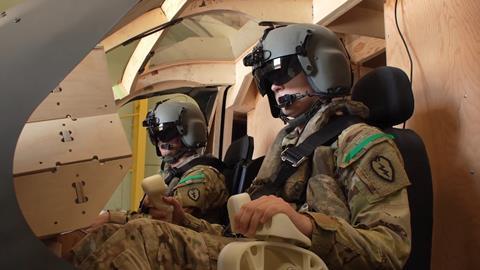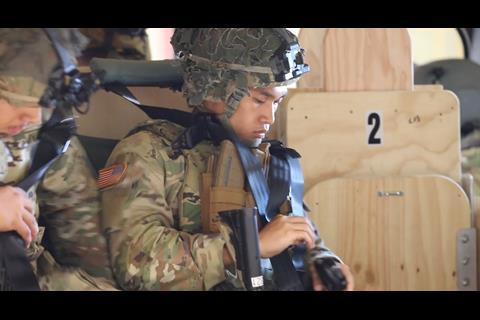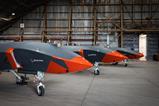Although the first example will not be delivered until 2026, combat troops from the US Army have already started training on the service’s new Bell tiltrotor aircraft.
Known as the Future Long-Range Assault Aircraft (FLRAA), at least until a permanent name and designation are selected, the craft is billed as the successor the venerable Sikorsky UH-60 Black Hawk that has carried troops into combat for some 40 years.
While Bell plans to deliver the first test example of the FLRAA in 2026, some of the army’s ground troops are already training on the new type.
Infantry soldiers from the Hawaii-based 25th Infantry Division practised loading and unloading from a mock-up FLRAA cabin earlier this month, complete with a full combat load of rifles, rucksacks and body armour.
“This soldier user evaluation is really focused on seat configuration and the ergonomics of getting off… the aircraft and on the aircraft as quickly as possible in a tactical environment,” says Colonel Jeff Poquette, the army’s project manager for the FLRAA acquisition.
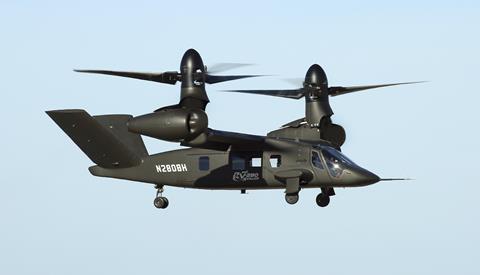
In the forward section of the model, the 25th Infantry Division’s top aviation officer, Colonel Matthew Scher, explored a proposed cockpit layout using augmented reality goggles. The glasses superimposed a “complete virtual model of the aircraft” over the physical mock-up, according to the army’s aviation procurement office.
“This immersive technology allowed pilots and flight crews to visualise the full scope of the FLRAA’s capabilities, from its seating configuration and controls to its storage and manoeuvrability within the cabin,” the programme executive office for aviation says.
A number of Scher’s pilots also tested the mock cockpit, which is complete with moulded fight controls, while a door gunner manipulated a swing arm-mounted machine gun.
Outside the faux aircraft, technicians measured soldiers in their combat kit to assess space requirements.

Testing FLRAA design configurations with the Hawaii-based force is not happenstance. The 25th is the army’s designated unit for jungle combat and trains regularly with partner nations across East Asia – several of which are subject to escalating pressure from China amid rising geopolitical tension.
The FLRAA tiltrotor was designed with the Indo-Pacific in mind, where vast distances separate the islands and land masses.
But the new Bell rotorcraft will be put into service across the globe, not just in the Pacific, and troops in the back will have similar concerns no matter where they are in the world. Poquette says incorporating junior soldiers into the design process for FLRAA gives the tiltrotor’s ultimate users a chance to “enhance the features that matter to them”.
“They don’t think so much about engine power or rotor system design,” he says. “What they think about is where are the controls, are they easy to get to, can I get in and out of my seat quickly, can I get in and out of the aircraft quickly?”
While the cabins of military helicopters can appear quite spacious at air shows and public displays, the available space quickly diminishes when soldiers carry ammunition, food, water, batteries and other supplies needed for combat.
Events such as the recent test day in Hawaii are an attempt by programme officials far from the frontline to build an aircraft that performs as needed not just in test flights, but for its ultimate users.
“The feedback we receive here will lead to design decisions to make this aircraft better,” says Jason Lucas, deputy FLRAA project manager.
In footage released by the army, equipment-laden soldiers can be seen boarding the rear cabin, strapping into troop seats with their kit and disembarking to set up a security perimeter around a mock landing zone.
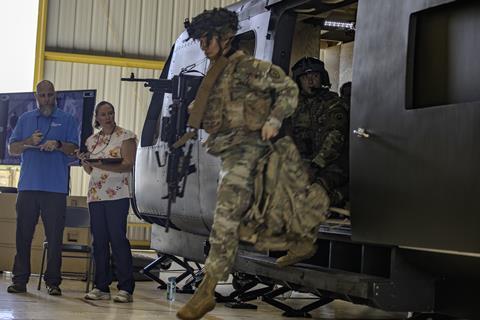
The FLRAA programme has two major targets, according to Lucas. The first is delivering an aircraft that can fly “twice as far [and] twice as fast” as the existing platform.
Army programme requirements for FLRAA stipulated it have 2,440nm (4,520km) of range and continuous cruise speed of at least 280kt (518km/h).
The second is to build a platform around so-called “modular open systems architecture” – meaning the FLRAA’s hardware and software is to accommodate fast and cheap capability enhancements from third-party suppliers over the course of its operating life. The Pentagon’s focus on open systems is meant to pre-empt so-called “vendor lock” – when proprietary intellectual property on a vehicle gives the original manufacturer an effective monopoly on future enhancements.
Poquette says feedback from active duty troops on the proposed FLRAA layout will be provided to manufacturer Bell to inform the final aircraft design.
“The goal would be that crew members [and] soldiers are happy and know that they had a hand in helping to design this aircraft,” he says.
Similar sessions will be held throughout the army approximately every six months, Poquette notes, as Bell and the service work toward delivery of the first test aircraft.
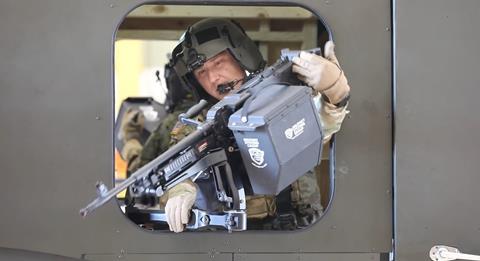
Bell received what is known as “Milestone B” approval on FLRAA from the army in August. The decision established an official programme of record for FLRAA within the Pentagon’s procurement bureaucracy and allowed the army to exercise options for six prototype aircraft.
These will be used for both ground evaluations and flight testing, as Bell and the army move toward a final combat service design for the tiltrotor.
Bell parent Textron in September confirmed plans for 2026 delivery of the first FLRAA prototype, followed shortly by the type’s first flight. The V-280 Valor prototype used by Bell to win the FLRAA contract has already flown.
The army plans for the FLRAA programme to enter low-rate initial production in 2028, with fielding of the first tiltrotor to operational units as soon as 2030.
The Pentagon’s Special Operations Command (SOCOM), which operates a separate procurement system, has indicated it too will acquire the FLRAA several years after the army’s conventional forces. SOCOM has already been working with Bell and the army during the initial FLRAA design process to streamline the standard airframe for special-operations-oriented modifications in the future.
More photographs of the recent FLRAA troop tests in Hawaii:






















